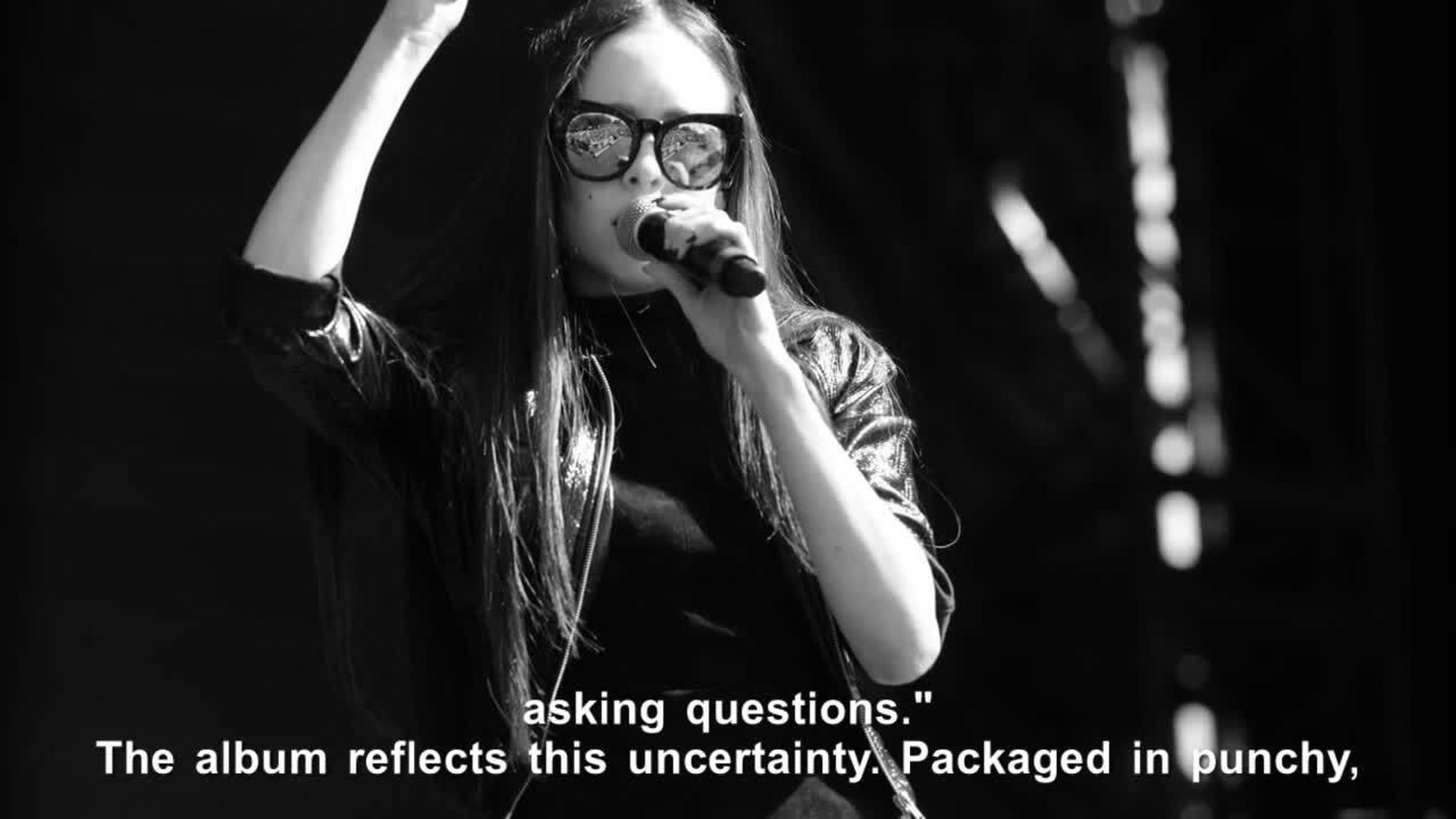Though pop is known for its commercial simplicity, Allie X is an ambiguous outlier, using music to navigate life's complexities and construct a better sense of self. "I don't claim to have answers--I'm just asking questions," says the Canadian-born, Los Angeles-based singer-songwriter.
Her new full-length album, CollXtion II, reflects this uncertainty. Packaged in punchy, minimal synths, its tracks are inspired by "the loss and fragmentation of one's identity" and offer a woozy, weirdo sampling of her disjointed perspective.
"Paper Love" suggests her heart can be ripped apart, "Vintage" is a tribute to timeless romance, and on lead single "Casanova" she's left dying for love. "The album is a study of how much of me is actually me, and how much is informed by pain and trauma," she says. "Some songs are memories, some are dreams, and some are my interpretation of reality."
OUT caught up with Allie X to learn more about CollXtion II, which premieres Friday, June 9.
OUT: Once you wrapped CollXtion I, what was the process for writing this new project?
Allie X: I started writing this record pretty much immediately after I put CollXtion I out, and I must have written like 40 to 50 songs that I thought at one point might be on the record. By the beginning of last summer, I found myself exhausted and wanted to take a minute to sort of get some perspective, so I went back to Canada. After spending a little time there, I looked at what I had and realized I had a record. But I didn't really--I didn't have the sonic cohesiveness I wanted and more than that, I looked at how I was writing.
There's this sort of machine in LA when you write music, where you spend a day in the studio with another writer and producer, and you have a song by the end of the session. It's great and I actually love writing that way for pitch, but the way I started [making music] was so different from that. It was me spending a month on a song by myself in Ableton, and when I was in Canada, I got to thinking about that. So I started writing that way again, and ended up writing some of my favorite songs on the record, like "Paper Love," "Vintage" and "Simon Says." I did bring on collaborators later to help me finish, but I did the bulk of the work by myself with a set up studio.

Lyrically, what have you explored on this album?
It's a study of how much of me is actually me, and how much is informed by pain and trauma. Because throughout my life, I feel like I've lost and gained pieces of myself out of necessity to protect or defend myself. The album studies how much of who you are is pure--how much of it was there when you were born and how much is shaped by pain. Each song on the album can be thought of as a piece of me. Some songs are memories, some are dreams and some are my interpretation of reality.
Does CollXtion II answer the questions you raised at the beginning of this study?
I don't claim to have answers--I'm just asking questions. I feel like so much of who you become is shaped by experience, and there are things about myself that have been shaped by negative experiences that I wouldn't want to lose. But if I think about school specifically and how I had to change my personality to fit in and not get bullied, because I was weird, singing was how I got people to like me. I became a persona of myself, and I almost feel this detachment from... [laughs] I don't know, I guess I just feel confused. I feel like a few different people and I'm not sure which one is the purest form of me. I feel like people can probably relate to that for the most part, but maybe in a less abstract way.
The concept of "X" has been a part of your identity since the beginning of Allie X. Has its meaning changed at all?
I consider "X" to be the tool to fill in those empty spaces, and the thing you need to reclaim your identity when you feel confused about who you are. Because it really gives you permission to be anything.
What's the story behind your single, "Paper Love"?
"Paper Love" is about self-sacrifice and knowing that someone or something is going to rip you apart like paper, and you're in a vulnerable state, but just doing it anyway. The song is written to this Jungle George bass riff. I first heard it in like February, 2016, and immediately could hear that whistle. I backlogged it in my brain as something I'd like to finish and explore at some point, and then last summer I pursued it. The process took about a month. I had that melody, but wrote the lyrics on a six-hour drive to Osheaga--that festival in Montreal. I finished it a few weeks later, so it was a long process, but "Paper Love" is one of my favorite songs.
Sonically, what did you explore on CollXtion II?
I was really trying to explore minimalism. I always love a lot of synthesizers and was trying to use different parts of my voice--not necessarily just belting out all the time. In the past I've produced by layering and layering until there can be no more layering, like if you listen to "Catch," it's like a river of sounds you could swim through. With this album, I was trying to do the opposite and get to only the most important sounds and eliminate everything else. I was really drawn to punchier stuff. I wanted a really nice low end and wanted to incorporate some more live elements, as well. There's a little bit more guitar on this. I didn't have any on the first record.
Related | Troye Sivan: First YouTube, Now the World
You co-write "Vintage" with Troye Sivan, who you've collaborated with before. How was it working with him in the studio?
You can really hear Troye's lyric style on the verses there. He's a great writer, and just the sweetest, nicest, funniest, humble person. I'm actually just a fan. I've worked so much with him and the more I get to know him, the more I like him. He knows what he wants. I've worked with a lot of artists his age that don't have a direction. They're just wanting to be famous, but Troye's really an artist. He really gets excited about music. It's not about all the stuff that goes along with being famous, it's really more about the art itself. I just have a ton of respect for him.

What's the concept behind your CollXtion II album artwork?
I'm wearing a dunce cap, which represents shame and embarrassment. The whole cover art is supposed to look kind of juvenile. The blocks are totally conceptual, and they represent trying to reclaim one's identity--figuring out how the pieces of yourself fit together. I feel like a child. I'm always trying to figure out why and sort of break out of it. That's not something I'm proud of, but I feel like at a certain age, I got kind of stuck. In some ways, I never got mentally past that, and that all has to do with identity.
You created GIFs for every song on CollXtion II. What was the process?
We did a shoot in November, in New York at this closed down mental institution on Long Island, called Kings Park Psychiatric Center. We had to sneak in. It's crazy and super old. There's paint peeling on all the walls, there's abandoned furniture, beds, clothing, there's graffiti, as well, because a lot of people break in there. I'm interested in photos that have a grotesqueness to them, but also a beauty. I'm always trying to find that juxtaposition.
Like what you see here? Subscribe and be the first to receive the latest issue of Out. Subscribe to print here and receive a complimentary digital subscription.




























































































